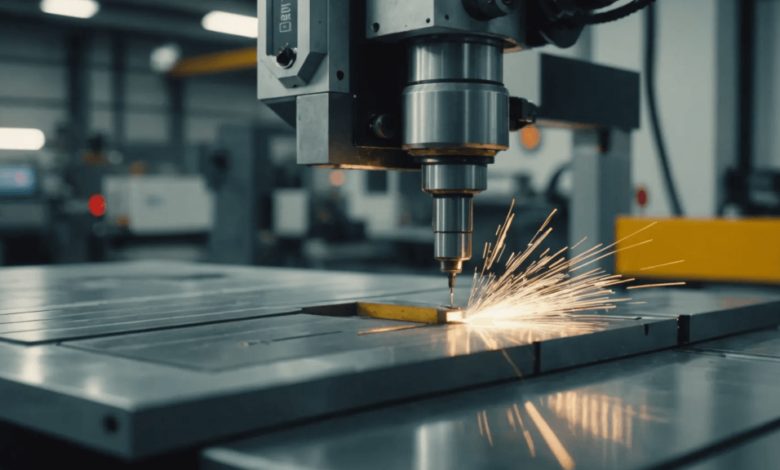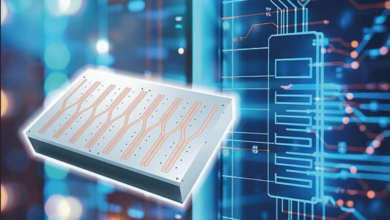Precision and Performance: A Deep Dive into CNC Machining Aluminum Parts

In the world of modern manufacturing, precision is everything. When it comes to producing strong, lightweight, and highly accurate components, few materials and processes outperform CNC machining aluminum parts. Whether it’s for aerospace applications, automotive systems, electronics enclosures, or robotics, this combination of material and technique continues to dominate due to its unmatched balance of strength, cost-efficiency, and versatility.
In this article, we’ll explore the advantages of CNC machining aluminum parts the industries it serves, the machining process involved, the various aluminum grades used, and emerging trends that are shaping the future of this essential manufacturing method.
What is CNC Machining?
CNC, or Computer Numerical Control, is a method where pre-programmed computer software directs the movement of tools and machinery. The technique is known for achieving exceptionally high precision and repeatability, even on the most complex geometries.
When applied to aluminum—a metal known for its softness, thermal conductivity, and resistance to corrosion—the results are highly detailed, functional components with fine tolerances. That’s why CNC machining aluminum parts has become a standard practice across countless engineering applications.
Why Aluminum for CNC Machining?
Aluminum is among the most machinable materials, offering several significant advantages:
- Lightweight Yet Strong: Aluminum is ideal for applications where strength-to-weight ratio is critical.
- Corrosion-Resistant: It forms a natural oxide layer that protects it from rust.
- Excellent Thermal and Electrical Conductivity: Perfect for heat sinks and electronic components.
- Attractive Surface Finish: Polished, anodized, or sandblasted finishes make parts aesthetically pleasing.
- Cost-Efficient: Readily available and easy to machine, aluminum reduces labor and tooling costs.
Combining these material benefits with CNC precision creates components that meet the highest industry standards.
See also: Navigating Complex Regulations with AI: How Modern Tech is Reshaping Compliance
Common Grades Used in CNC Machining Aluminum Parts
Not all aluminum grades are created equal. Here are the most commonly used types for CNC machining:
1. 6061-T6 Aluminum
This is the most versatile and widely used grade in CNC applications. It offers good strength, corrosion resistance, and weldability. It’s suitable for structural components, aerospace fittings, and consumer electronics.
2. 7075 Aluminum
This high-strength grade is commonly used in aerospace and military applications. It’s less machinable than 6061 but offers much greater tensile strength and fatigue resistance.
3. 2024 Aluminum
Often used in aerospace sectors, this grade has excellent fatigue resistance but is less corrosion-resistant. It’s ideal where weight and strength are critical.
4. 5052 Aluminum
Known for its formability and corrosion resistance, this grade is great for sheet metal parts and enclosures.
The CNC Machining Process for Aluminum Parts
Creating CNC machining aluminum parts involves multiple carefully coordinated steps:
1. Design and CAD Modeling
Engineers create a detailed digital model using CAD software. The model includes all specifications such as dimensions, tolerances, and surface finish.
2. CAM Programming
The CAD model is imported into CAM (Computer-Aided Manufacturing) software, which generates tool paths and instructions for the CNC machine.
3. Material Preparation
Aluminum stock (bars, plates, or blocks) is selected and securely clamped onto the CNC machine bed.
4. Machining Operations
CNC machines execute a series of operations including:
- Milling: For cutting and shaping flat surfaces.
- Turning: Used to create cylindrical components.
- Drilling: For precise holes and cavities.
- Tapping: Adds threads for screws and bolts.
5. Post-Processing and Finishing
Parts may be anodized, powder-coated, sandblasted, or polished depending on the desired appearance and function.
Applications of CNC Machining Aluminum Parts
Due to its versatility, CNC machining aluminum parts is essential in various industries:
🚀 Aerospace
Lightweight and high-strength aluminum components are used for airplane wings, fuselages, and engine parts. CNC ensures accuracy and compliance with stringent safety standards.
🚗 Automotive
Engine brackets, transmission housings, and suspension parts are often machined from aluminum to reduce vehicle weight and increase fuel efficiency.
💻 Electronics
Aluminum enclosures, heat sinks, and connectors benefit from its conductivity and non-magnetic properties.
🏭 Industrial Machinery
Custom aluminum components for robotics, automation equipment, and sensors are produced with CNC to fit exact mechanical requirements.
🏠 Consumer Goods
Products like laptops, smartphones, kitchen gadgets, and home decor use CNC-machined aluminum parts for their sleek appearance and strength.
Surface Finishing Options
Aesthetics and performance often go hand-in-hand. After CNC machining, aluminum parts can receive various surface treatments:
- Anodizing: Improves corrosion resistance and adds color.
- Bead Blasting: Provides a matte texture.
- Powder Coating: Durable, colorful, and protective.
- Brushing and Polishing: Enhances appearance for luxury items.
These finishing processes enhance the lifespan, visual appeal, and performance of the aluminum part.
Tolerances and Quality Control
Tight tolerances are vital for functional and mating parts. CNC machining offers tolerances down to ±0.005 mm depending on design and material. Quality control typically involves:
- CMM (Coordinate Measuring Machines)
- Optical Comparators
- Go/No-Go Gauges
- Surface Roughness Testers
This ensures each batch of CNC machining aluminum parts meets exact specifications.
Challenges and Considerations
Although aluminum is easy to machine, a few challenges must be managed:
- Chip Management: Aluminum produces long chips that can clog tools if not properly ejected.
- Tool Wear: Although aluminum is soft, improper speeds and feeds can lead to premature tool wear.
- Thermal Expansion: Aluminum expands under heat, which must be factored into precision machining.
Using high-speed spindles, sharp tooling, and coolant systems helps overcome these challenges.
Emerging Trends in CNC Aluminum Machining
As technology advances, so do the possibilities in CNC machining aluminum parts. Some trends include:
- Multi-Axis Machining: 5-axis and even 9-axis machining allows more complex shapes and fewer setups.
- AI-Driven Optimization: Machine learning algorithms help reduce cycle times and prevent tool breakage.
- Sustainable Machining: Use of recyclable aluminum and eco-friendly coolants is on the rise.
- Cloud-Based Monitoring: Real-time job tracking, performance analysis, and predictive maintenance.
Conclusion
In a manufacturing ecosystem that demands speed, accuracy, and versatility, CNC machining aluminum parts stands out as a game-changing solution. From early prototyping to full-scale production, this process empowers companies to build lightweight, durable, and intricate components that meet the demands of modern applications.
Whether you’re designing the next generation of drones or crafting custom heat sinks for high-performance computing, CNC aluminum machining offers the efficiency and quality that today’s innovators need.



